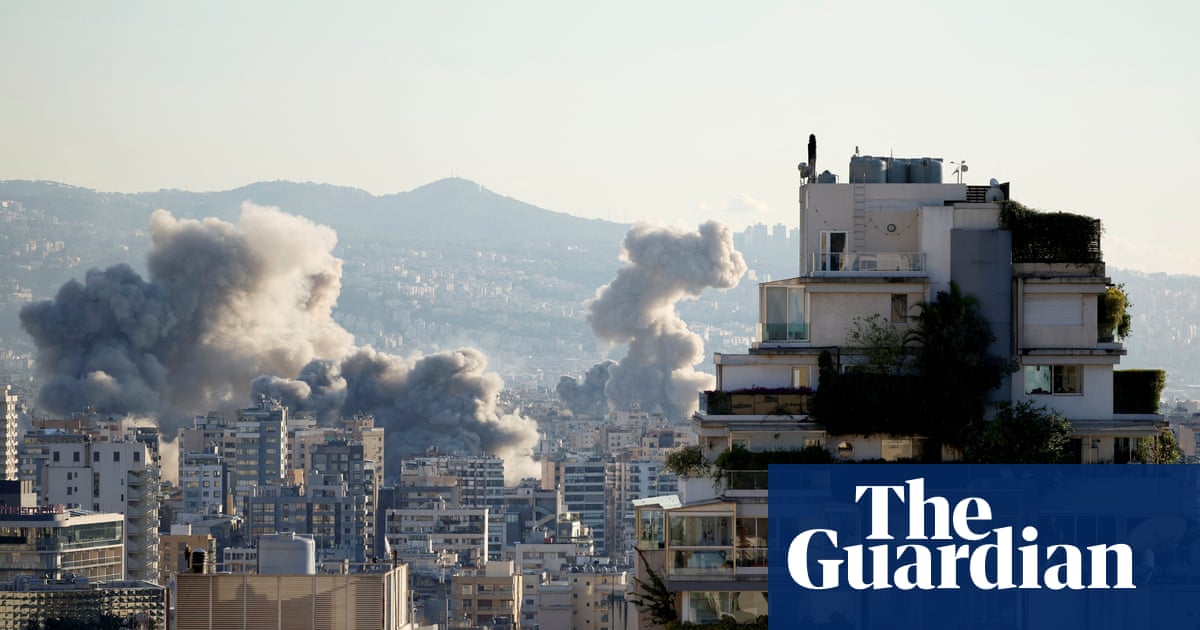A ceasefire to pause the fighting between Israel and the Lebanese militia Hezbollah is expected to be announced as early as Tuesday evening by the US president, Joe Biden, and his French counterpart, Emmanuel Macron, and come into effect sometime on Wednesday.
The Biden administration, wary of regional escalation that could draw in Hezbollah’s major ally, Iran, has been trying to broker a truce for months. The conflict began 13 months ago when the powerful Lebanese militia began firing rockets and shells at Israel a day after the Palestinian group Hamas attacked Israel, triggering the Gaza war.
Israel’s security cabinet is scheduled to meet on Tuesday afternoon to vote on the proposal, which is expected to pass despite opposition from Benjamin Netanyahu’s far-right allies.
Do we know the details of the deal?
The agreement follows the contours of UN security council resolution 1701, which ended the 36-day Israel-Hezbollah war of 2006, but was never fully implemented.
Israel’s military is expected to withdraw entirely from southern Lebanon, while Hezbollah would pull its heavy weapons north of the Litani River, about 16 miles (25km) north of the border. During a 60-day transition phase, the Lebanese army would deploy to the buffer border zone alongside the existing UN peacekeeping force. Longstanding border disputes will be discussed after the 60-day withdrawal period.
The process will be monitored by a US-led supervisory mechanism that would act as a referee on infringements. A letter of assurances that is not formally part of the deal reportedly guarantees US support for Israeli freedom of action if Hezbollah attacks Israel again or moves its forces or weaponry south of the Litani.
Is it likely to work?
Israel appears to have come to the table after warnings from Washington that a failure to agree a ceasefire would prompt the US not to veto a UN security council resolution that would impose a ceasefire under disadvantageous conditions for Israel.
“There are no serious obstacles” left to implementing the truce, the deputy speaker of the Lebanese parliament, Elias Bou Saab, said on Monday, and the New York Times reported this week that the deal has a green light from Hezbollah’s patrons in Iran. Tehran is keen to avoid further degradation to its major deterrent against Israel.
Israel will be glad of the opportunity to rest its tired ground forces and reservists and repair and replenish munitions and inventory. It is also pleased that the US, its major ally, will be directly involved in mediating violations.
What is the situation on the ground?
There has been fierce fighting over the past few days as both sides seek to solidify gains.
Israel carried out intensive airstrikes on the Lebanese capital, Beirut, and across the south of the country on Monday and Tuesday, after Hezbollah fired more than 200 rockets into Israel on Sunday – one of the heaviest attacks since the war began.
The conflict escalated in late September, when hundreds of Hezbollah pagers exploded in an attack attributed to Israel. Israel then killed much of Hezbollah’s leadership in airstrikes, and launched a ground invasion of southern Lebanon.
About 3,700 people have been killed in Lebanon, and 126 people in Israel by the fighting. Hundreds of thousands on both sides of the blue line have been displaced from their homes.
What about a ceasefire in the war in Gaza?
Importantly for the Israelis, Hezbollah has dropped its demand that a ceasefire in Lebanon is contingent on ending the fighting in Gaza.
Since a truce in the Gaza war collapsed after a week last November, ceasefire negotiations have repeatedly failed. Qatar, a major mediator between Israel and Hamas, announced earlier this month it was quitting its role until both parties showed “willingness and seriousness” in the talks.
Resettling or permanently reoccupying Gaza is not official Israeli policy, but senior defence officials recently told the Haaretz newspaper that the government was aiming to annex large parts of the territory rather than negotiate an end to the war.

